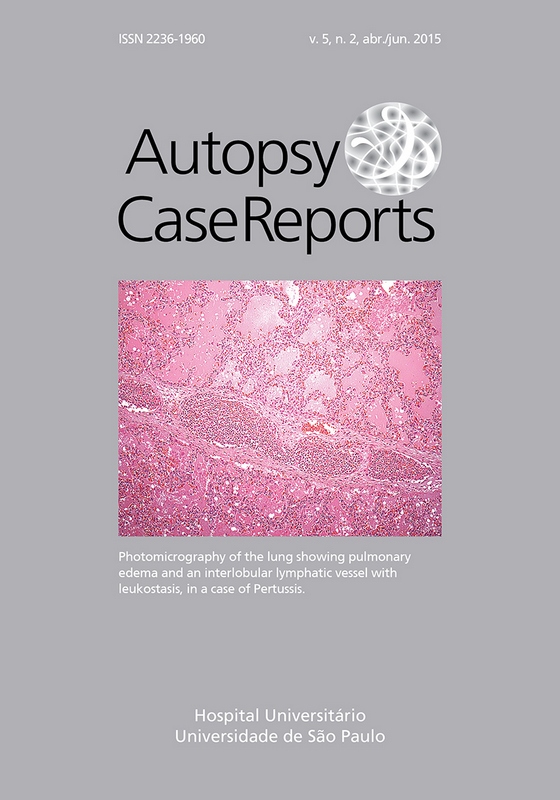Budd–Chiari Syndrome: an unnoticed diagnosis
Keywords:
Budd–Chiari Syndrome, Hypertension, Portal, Liver Cirrhosis, Ascites, AutopsyAbstract
Budd–Chiari syndrome (BCS) encompasses a group of disorders caused by the obstruction to the hepatic venous outflow at the level of the small or large hepatic veins, the inferior vena cava, or any combination thereof. Clinical manifestation of the subacute form is characterized by supramesocolic abdominal discomfort, abdominal distension, fever, and lower limbs edema. Imaging work-up with hepatic Doppler ultrasound and abdominal computed tomography (CT) enables the diagnosis in the majority of cases. Treatment comprises long-term anticoagulation associated with measures that attempt to re-establish the flow in the thrombosed vessel (thrombolysis or angioplasty) or through the venous blood flow bypasses (transjugular intrahepatic portosystemic shunt or surgical bypass); however, the outcome is often dismal. The authors report the case of a 37-year-old woman presenting a 2-month history of dyspeptic complaints and abdominal distention. Fever was present at the beginning of symptoms. The laboratory work-up disclosed mild hepatic dysfunction, and the ultrasound showed evidence of chronic liver disease. Despite a thorough etiologic investigation, diagnosis was missed and, therefore, management could not be directed towards the physiopathogenetic process. The outcome was characterized by portal hypertension and esophageal varices bleeding. The patient died and the autopsy findings were characteristic of BCS, although an abdominal CT, close to death, had showed signs consistent with this diagnosis. The authors highlight the importance of knowledge of this entity, the diagnostic methods, and the multidisciplinary approach. BCS should be considered whenever investigating etiology for chronic or acute hepatopathy.
Downloads
Downloads
Published
Issue
Section
License
Copyright
Authors of articles published by Autopsy and Case Report retain the copyright of their work without restrictions, licensing it under the Creative Commons Attribution License - CC-BY, which allows articles to be re-used and re-distributed without restriction, as long as the original work is correctly cited.



